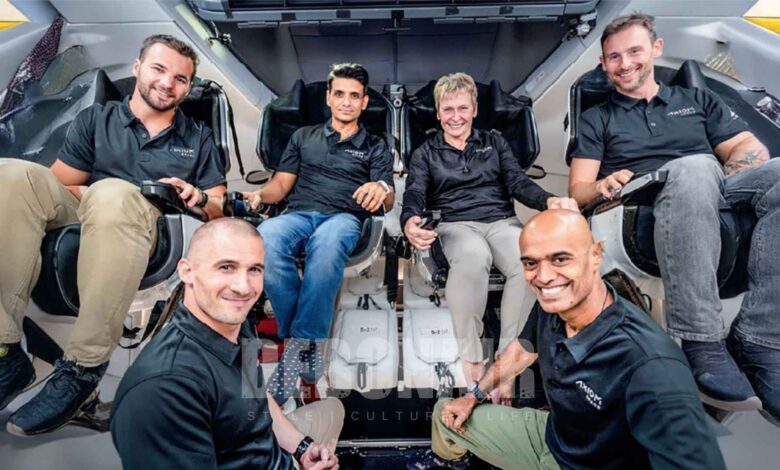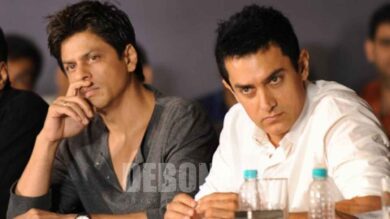Shubhanshu Shukla Set to Fly to ISS on June 19 Aboard Axiom-4
India’s Gaganyaan astronaut to make historic journey aboard SpaceX’s Dragon capsule as part of international Axiom-4 mission to the ISS.

New Delhi, June 14: After multiple setbacks, the countdown is back on for the Shubhanshu Shukla ISS Axiom-4 launch, now confirmed for June 19. This SpaceX-powered mission, orchestrated by Axiom Space in collaboration with ISRO and NASA, will mark a significant milestone for India in commercial space travel.
It’s been a bumpy road getting here. But that’s space for you — nothing about it is easy.
So, What Went Wrong?
To start with, there was a liquid oxygen leak in the booster of SpaceX’s Falcon 9. It’s the kind of problem that wouldn’t even make the news in a satellite launch, but when you’re strapping people into that rocket, everything changes. No risks. No grey areas. SpaceX called it off immediately, and rightly so.
Then came the weather — Florida’s been moody lately, with high-altitude winds, cloud cover, and ocean recovery zones acting up. Those issues alone would’ve pushed back the schedule.
And just when things seemed on track, word came from orbit: a pressure drop in the ISS’s Zvezda module. NASA and Roscosmos spent days inspecting and sealing what was essentially a small leak, but again — no risks.
ISRO put out a statement once all systems were cleared. “All issues have been duly addressed,” they said. Now, with approvals in place and the crew on standby, June 19 is the new date to watch.
Why Shukla’s Seat on This Rocket Matters
It’s not just a milestone — it’s a moment. Rakesh Sharma may have gone to space first, back in 1984, but that was a different time, a different setup. Shukla’s seat on Axiom-4 is historic for another reason: he’s doing it with a private team, under a commercial partnership, coordinated across four countries.
Also, let’s not forget — Shukla is one of India’s four Gaganyaan astronauts. That mission, when it eventually lifts off, will be 100% Indian. But this one gives him vital prep: docking procedures, in-orbit science, living on the ISS. None of this can be simulated perfectly on Earth.
And for India? It’s a signal. We’re not just watching the space race. We’re in it — not tomorrow, but now.
Who’s Flying With Him?
The commander is Peggy Whitson, and if you know anything about NASA’s space veterans, her name rings loud. She’s logged more time in space than any American astronaut — over 600 days. That kind of experience brings a calm no simulator can teach.
Then there’s Sławosz Uznanski-Wiśniewski from Poland, flying under ESA (European Space Agency), and Tibor Kapu from Hungary. Both are first-timers in space, but top-tier scientists with serious credentials.
Shukla is the only military pilot in the group. A Group Captain in the Indian Air Force, he’s logged thousands of flight hours, including testing fighter jets. Now, it’s Dragon capsule controls.
It’s Not Just a Joyride — There’s Science Onboard
The Axiom-4 team isn’t just going to float around taking photos. They’ll be running seven experiments — many designed by Indian institutions.
These include:
- How human muscle tissue reacts in zero gravity
- The behavior of microalgae and cyanobacteria in orbit (think: future life support systems)
- Testing tardigrades in microgravity (those tiny, nearly indestructible creatures)
- Seed germination studies — can crops grow off-Earth?
- A look at how astronauts interact with digital systems during long-duration space travel
Shukla’s job? Lead several of these, document them, and bring the results home.
ISS Isn’t Getting Any Younger
Here’s the thing — the ISS is ageing. That Zvezda leak wasn’t a fluke. Elon Musk even said recently that parts of the station could face retirement soon. There’s real pressure to start shifting operations toward new platforms.
Axiom Space, the company behind this mission, is already building modules that may one day detach from the ISS and form a standalone station. Ax-4 is part of that story — a test run for the future.
India’s Watching, and the Energy Is Real
Social media’s been on fire. “From Sukhoi to space station — Shukla sir is taking India along for the ride,” read one tweet. Another: “When Sharma looked at Earth, he saw India. When Shukla looks, the world will see us.”
It’s not just fanfare. It’s genuine pride. This mission blends India’s heritage in space with what’s clearly becoming a forward-facing global role.
Final Countdown
If the skies hold and systems stay green, the launch happens June 19 from Kennedy Space Center. Shukla will board with Whitson, Kapu, and Uznanski for a roughly 36-hour trip to the ISS, where they’ll dock and begin two weeks of work.
What happens next? Data gets logged. Research comes back. And for Shukla, it’s one step closer to an all-Indian crewed mission.
No banners. No speeches. Just a pilot, his mission, and a country quietly lifting its eyes to the stars.
Stay updated with the latest in fashion, lifestyle, and celebrity stories—straight from the world of Debonair.
Follow us on Instagram, X (Twitter), Facebook, Youtube, and Linkedin for daily style and culture drops.





